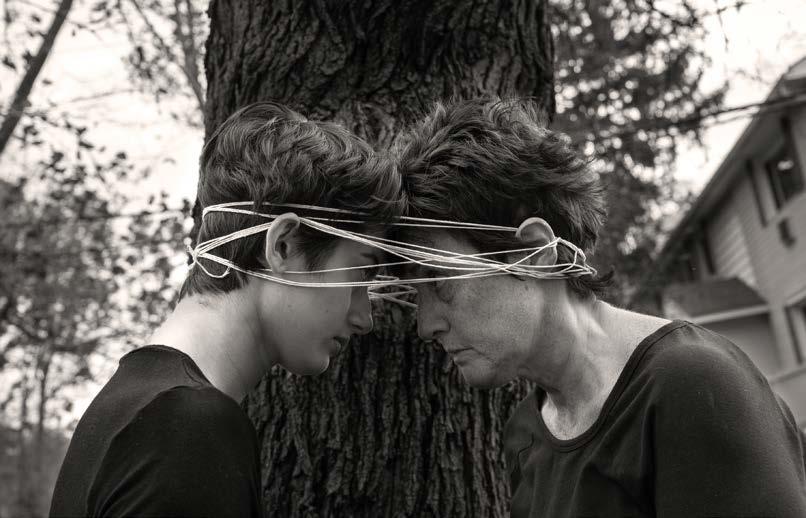
3 minute read
Joseph Kattou (Alumnx
JoSeph Kattou in Conversation with JessiCa BeCkwith
Jessica Beckwith: Once the violence of governments has made its mark, the people are left to make a life within these new circumstances. How do you feel that the presence of these different cultures, and violence, suppression, as well as cohabitation, have affected the Taino people and culture?
Joseph Kattou: The tricky thing about these sorts of generational traumas is that they never go away. The colonization by Spain nearly destroyed the Taino people, and once they destroyed their population the Colonists began to bring in enslaved Africans to continue the forced labor. This displacement lead us to a very thorough creolization that is very apparent in the modern day. The masks of Puerto Rico take artistic and cultural cues from not only the indigenous Taino, but the descendants of enslaved Africans as well, all fit within a Spanish-dominated cultural industry.
JB: How has this history affected you and your family? Did those personal experiences inform and inspire this series of masks?
The history of Spain’s occupation is still very apparent in the culture, language, architecture and just about every facet of life in Puerto Rico. The later conquest by the United States, who have historically enacted violence against the people, means that no living Puerto Rican has known an island that was not under Colonial rule from an outside force. It leads to a certain adaptability and composite cultural identity that Puerto Ricans actively shape.
The Careta masks are created as a part of carnival in Puerto Rico, right?
JK: Many of the masks, like the famous horned mask called the Vejigante are typically used in street festivals and dance. The masks in this series take direct inspiration from that contemporary practice as well as remnants of Taino masks and surviving petroglyphs of the Cemi, or ancestor spirits.
Joseph Kattou
BFA Sculpture, Alumnx 2019
JB: What do the Careta masks represent to you? Are they an aspect of erasure, or a claiming of your culture?
JK: They walk the line of both to me. They represent a kind of endurance and adaptability that the people can always preserve their heritage, even as they enter the diaspora.
JB: What is your experience when you wear these masks? Do they act as a thread connecting you to your cultural identity or are they an element of erasure of self and culture to you?
JK: They are, to me, both a caricature and a statement of resistance. There are many preconceived notions of what a Puerto Rican is. These masks are not immediately recognizable as Puerto Rican to many unaware of the culture, but they do immediately read as ‘other’, ‘foreign’ or ‘native’ to those same unaware people. As those in the series condense their identity into this mask they also assert a fragment of their own personality via the way they dress, the props they hold, and how they carry themselves.
JB: I know you explore the ongoing damage of colonization and othering. Do you think art has the power to rewrite this history of erasure in a way that can empower future generations?
JK: I believe that rather than rewriting history, projects like these reveal the historical truths. History is already heavily redacted and rewritten in the favor of the colonizers. With a series like Orgulloso I work to assert two truths: we did not forget where we came from, and we won’t let anyone take that from us again. I hope that other Puertorriqueños feel seen and empowered and everyone else can begin to educate themselves on who we are, because we are not leaving anytime soon.
Orgulloso Series - Self Portrait in a Sun Mask Digital photograph, resin, paint, gold (left & right)











